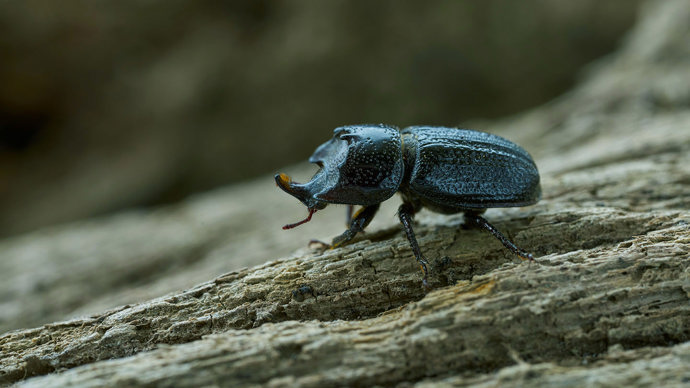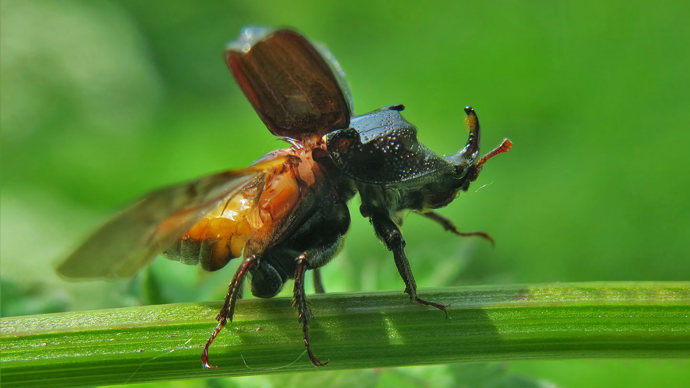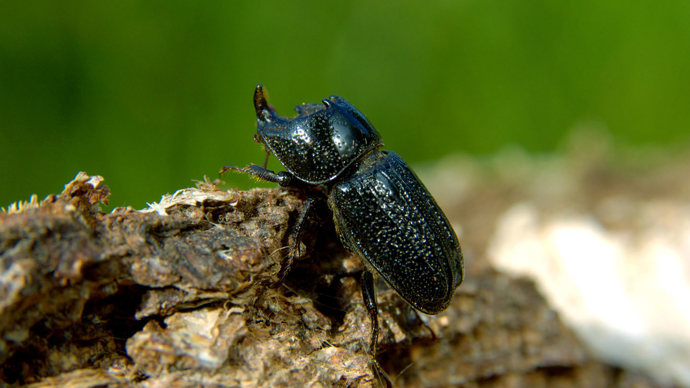Common names: rhinoceros beetle, horned stag beetle, least stag beetle
Scientific name: Sinodendron cylindricum
Family: Lucanidae
Habitat: woodland
Diet: adults feed on tree sap, larvae eat rotting wood
Predators: birds and mammals
Origin: native
Big and bold deadwood lovers. These impressive insects need trees to feed and breed.
Common names: rhinoceros beetle, horned stag beetle, least stag beetle
Scientific name: Sinodendron cylindricum
Family: Lucanidae
Habitat: woodland
Diet: adults feed on tree sap, larvae eat rotting wood
Predators: birds and mammals
Origin: native
Adults: Male rhinoceros beetles can be easily identified by the horn-like projection on their head, which earned the species its name. Females have a less prominent small bump. The species is black, sometimes with a blue-green sheen. Rhinoceros beetles are related to stag beetles, but are much smaller. This species never exceeds 2cm in length, while male stag beetles can be nearly four times longer.
Larvae: are large white grubs with brown heads.

Credit: Stephen Dalton / naturepl.com
Rhinoceros beetles depend on trees for their food. They are thought to have a preference for beech trees.
Adults: feed on tree sap.
Larvae: feed on rotting deadwood.
The rhinoceros beetle is one of three members of the stag beetle family found in the UK. The others are the stag beetle itself and the lesser stag beetle.
When they are ready to lay their eggs, female beetles will bury into rotting wood, creating a system of tunnels. While his mate is busy working, the male will guard the tunnel entrance to stop any rivals from entering. Once the eggs have hatched, the larvae will feed in the tunnels eating the rotting wood.
Eggs are laid in fallen trees, rotting stumps and even rotting branches on living trees.

Credit: Ian Andrews / WTML
Rhinoceros beetles live in woods across the UK, but are most common in Wales and the Midlands. As they depend on trees for food and reproduction, the species is reliant on woodland for its survival.
This species is nocturnal and not the easiest to spot. Keep an eye on any rotting stumps or fallen trees and you may be lucky enough to spot an adult beetle scurrying around.

Credit: Nature Photographers Ltd / Alamy Stock Photo
As with most invertebrate species little is known about the population status of rhinoceros beetles. The loss of woodland threatens its habitat, while removal of dead wood may limit breeding potential.


Dead and decaying wood is one of any woodland's most important microhabitats. Learn more about why we need more of it, as well as the rare and endangered beetles, colourful fungi and other threatened wildlife that relies on it.